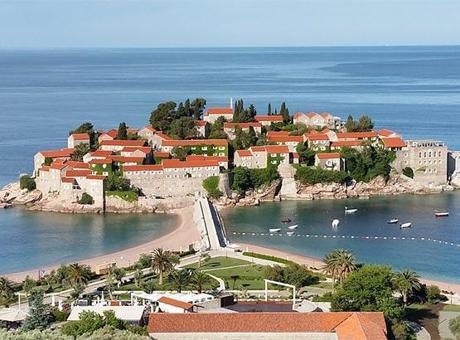The State of Scary TV: ‘The Returned’ and ‘Ash vs Evil Dead’ Join ‘The Walking Dead’ in Offering High-Quality Horror

Halloween falls on a Saturday this year, which is traditionally the least-watched night for television. Perhaps this is fitting. In 2015, TV can be many things that are appropriate to the holiday: shocking, horrifying, sticky-sweet, overcommercialized, and deeply, deeply gross. But one thing it still struggles with is fear.5 Don’t believe me? Take a moment to consider: What’s the last regular TV show that was actually full-stop scary? I don’t mean frightful in bits and pieces, like one of Leatherface’s victims. I mean a show that is scary from top to bottom, from beginning to end. And I mean a show other than, say, Dads.
This isn’t a criticism so much as it’s a fact of life. Movies, with their contained running times, are especially good at sustaining mood. When you take your seat for a horror film, you’re essentially agreeing to be on the edge of it for 90 to 120 minutes. TV, by its very nature, demands a diversity of tone and pitch. Viewers simply can’t be asked to hold their breath for eight, 10, or even 22 hours a season. Try it and they’ll be dead even sooner than your show. Instead, TV traditionally has had to play in the margins of horror, building entire series out of the offcuts and scraps usually undervalued by the Fangoria crowd: the slow, agonizing buildup; the stolid, yeomanlike investigation; the long, sorrowful denouement. (Or, as is the case with Fox’s smarmy Scream Queens, the idea that a sneer can wound more deeply than a knife.) A scary movie is a turn through a haunted house. A scary TV show is more of a haunted time-share. There have to be at least occasional feints toward amenities like comfort and humor because, let’s be honest, you’re going to be there awhile.
If anyone were going to crack the horror code on TV, I would have expected it to be a pay service like HBO or Netflix, with their unlimited makeup budgets and freedom to micro-target audiences with the precision of a serial killer. But the two most successful series to challenge the primacy of scary cinema both hail from the diabolical Jigsaws in basic cable. FX’s American Horror Story, still slaying the ratings in its fifth iteration, is likely the closest TV has ever come to the specificity and sustained craziness of film. Part of this is due to the show’s creative casting and unquenchable thirst for extremity. But let’s be honest: The most noteworthy aspect of AHS isn’t the bearded lady, it’s the length of each season. By limiting each cycle to 13 hours and a single story, the show’s one, discordant note can ring out like a symphony. One doesn’t watch AHS so much as one commits to it.6
AMC’s The Walking Dead is even more noteworthy. Not only is it far and away television’s most popular show among the highly coveted 18-to-34-year-old demographic, it has almost single-handedly refuted every one of the ideas laid out in my opening paragraph. Where most serialized dramas create a world and, over time, spread out into it, adding characters, nuance, and layers, The Walking Dead has a guillotine where the story engine should be. It has no interest in saving the world or curing the zombie outbreak. Instead, it sets up base camp in the crushing moment when most dystopic movies end, sinking into the heartbreak, violence, and loss. “Everything is fucked,” isn’t a traditional TV starting place, but, then again, The Walking Dead isn’t a traditional series. Its remarkable proficiency in areas often considered ancillary — sound design, visual effects, editing, and casting — has helped sustain it, even when the plot veers decidedly into a sort of sadistic nihilism. And, in a perverse way, the bleak consistency of The Walking Dead — no matter what else is going on, someone’s getting bitten every week — is precisely what saves it as a TV show. At this point, the constant, gruesome suffering has become as dependable as a laugh track.
Gene Page/AMC
This Sunday’s controversial episode actually further cemented The Walking Dead’s connection to the rest of TV. In the Jon Snow era, beloved shows have far outstripped the boundaries of their time slots. Fandom is a full-contact sport that runs around the clock, seasons be damned. That showrunner Scott M. Gimple had to qualify a major death — and thus step on his own dramatic narrative mere minutes after setting it in motion — was further proof that winking gamesmanship no longer works in a world where everyone is playing on such a high level. On The Walking Dead, humans may just be oversize chum for the zombie masses. But in reality, these characters are intimates, welcomed into our homes every week. A modern showrunner can, and should, rough them up. But he needs to remember to respect them.
Despite this misstep, my main takeaway from “Thank You” was admiration. Though there remain plenty of nits to pick about The Walking Dead, I’m thoroughly impressed by the show’s ability to harness tricky, fast-burning emotions like anguish, stress, and desperation and corral them within the confines of a weekly series. The panicked, almost druggy fugue state that Nicholas fell into as an impossible horde of zombies surrounded him was contagious. I’m not saying I can relate to the choice he made in that moment — but, god, who could blame him? Again and again, I’m finding the sheer scale of this season of The Walking Dead deeply unsettling; death has long been ever-present but rarely so monumental or, seemingly, inevitable. This relentlessness is radical for television, and in particular for Sunday-night television, which has long been the warming hearth of the country’s viewing week. It’s a pivot that has helped The Walking Dead become TV’s most horrific show in more than a literal sense; it ravages emotions now, not just entrails.
On Saturday night, right about the time most kids will be home counting their candy, two chilling, off-kilter series will premiere, each seeking to keep the jack-o’-lantern lights on well into November. Though SundanceTV’s The Returned is back for a second season — I loved the first — it’s Starz’s Ash vs Evil Dead that’s actually the more familiar of the pair. That’s because it picks up a baggy story that first began in 1978, when two frustrated Midwestern drama dorks named Sam Raimi and Bruce Campbell filmed a bloody short called Within the Woods. From that splattery snippet came a cult empire: a trilogy of beloved movies, plus a host of video games, comic books, and unlimited opportunities for cosplay. The only connective tissue between all of it: Raimi’s inimitable tongue-in-cheek/ax-in-hand aesthetic and Campbell’s performance as Ashley “Ash” Williams, a one-handed Everyguy in possession of a spirit-summoning Necronomicon. When ghouls come calling, Ash is generally there to dispatch them with a fusillade of one-liners and shotgun shells. With no more mountains to climb on the big screen (a cinematic reboot fizzled in 2013) and no more Spider-Man dance-offs to choreograph, the two have taken their trademark chain saw to the one frontier remaining to them: the small screen.
Here’s the thing about Ash vs Evil Dead: It’s good. Better, it’s fun in a goofy, infectious way that’s the polar opposite of The Walking Dead’s po-faced frown. You don’t need to have any familiarity with the franchise’s history or humor before tuning in. I’d say that the opening montage of the now-57-year-old Campbell attempting to squeeze into a girdle is a pretty good introduction, as is the scene in which a Michigan detective (Jill Marie Jones) is attacked by a neck-twisting poltergeist whose head ultimately explodes with the force and liquid velocity of one of Gallagher’s overripe melons. What’s great about Ash vs Evil Dead isn’t that it doesn’t take itself seriously — though, come on, it totally doesn’t. It’s that it picks and chooses very carefully the details it ought to take seriously. So Campbell — still the Iberico de Bellota of B movie hams — gives as much thought to Ash’s Chaplinesque pratfalls as he does the chain-saw-swinging swagger. And Raimi, who directed the first hour and cowrote or produced the remaining nine, imbues every high-jumping, skittering demon with both gravity and wit. With its severed limbs and references to Shabbos dinner, this isn’t your father’s horror show. It’s your wacky uncle’s. And thank god for it.
On the complete other end of the spectrum is The Returned. If Ash vs Evil Dead is a spouting artery of gleeful gore, the French series is rigor mortis itself. In the first season, the residents of a remote mountain town were undone when their dead relatives suddenly returned to life, seemingly unscathed and frozen at the age they were when they expired. So: A teenage girl is suddenly reconnected to her barely adolescent twin, a young mother is visited by the fiancé who killed himself while she was pregnant, a bar owner who happily buried his murderous brother years ago must find a way to accept him back into his orbit. It’s a bold premise, to be sure, and a lesser show would have balked at the pressure to provide answers. But the beauty of The Returned was the uncomfortable manner in which it asked its heavy questions, the way it allowed its impossible dream of a premise to curdle, subtly and slowly, into a sour nightmare.
In Season 2, The Returned remains as discomfiting and elliptical as ever. Few shows are as starkly beautiful; its palate of ghostly grays and harsh, metallic light suggests the work of an impressionist T-1000. And the music, once again composed by the Scottish noise poets Mogwai, is subtle and devastating. A flood has cleared out the town, and the dead have set up their own society in the mountains. The imminent arrival of Adèle’s (Clotilde Hesme) baby — she was impregnated last season by the very much deceased Simon (Pierre Perrier) — is what drives the plot, but, the truth is, plot seems almost secondary in such an eerie landscape. Indeed, The Returned doesn’t scare so much as it haunts. On a show like this, it’s the living who slowly drop their masks to reveal the scarred monsters lurking underneath. The supernatural is really just a mirror for the frightening possibilities of human nature. It’s this psychological dismemberment, not the bloodier, more literal kind, in which television has historically excelled. That’s because, when a movie ends, you can walk quickly out of the theater and retreat to the quiet safety of home. On TV, the scariest sights are always coming from inside the house.



